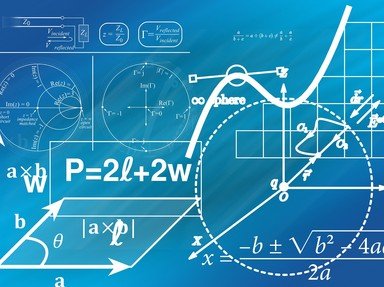Quiz Answer Key and Fun Facts
1. A PERFECT NUMBER is one which is the sum of its proper positive factors (the integers smaller than itself which divide evenly into the number). The smallest perfect number is 6; you can show that it is perfect because its factors are 1, 2, 3 and 6. That means its proper factors are 1, 2 and 3. The sum of its proper factors is 1+2+3=6. What is the next smallest perfect number?
2. Another way of defining a perfect number is to say that the sum of ALL its factors is equal to twice the original number (shown as 2n). An ALMOST PERFECT NUMBER (also called a slightly defective number) has a sum of all its factors equal to 2n-1 (one less than twice the original number). Which of the following numbers is almost perfect?
3. A QUASIPERFECT NUMBER is one for which the sum of all its factors is equal to 2n+1 (one more than the original number). Have any quasiperfect numbers been found?
4. A MULTIPERFECT NUMBER (also called a pluperfect number) is one for which the sum of all its positive factors is equal to a multiple of the number itself. 'Normal' perfect numbers have a sum of 2n, and are referred to as being 2-perfect. What is the smallest 3-perfect number, for which the sum of its factors is 3 times the number itself? (Hint: 3-perfect is a clue)
5. Next let's consider HYPERPERFECT NUMBERS. For a k-hyperperfect number (n), there is an integer k that means the sum of the factors of n is equal to [n(k+1)-1]/k + 1. For k = 2, which of the following is a 2-hyperperfect number? (Hint: Put 2 into the formula where k is written; test each number by putting it where n is and calculating both the resulting value and the sum of the factors of n.)
6. Is a hyperperfect number also a perfect number? (Hint: Try seeing if a few different values of k result in an expression that can be simplified to 2n.)
7. A UNITARY PERFECT NUMBER is the sum of its unitary factors. To demonstrate what this means, consider any number, a, for which b is a proper factor (a factor smaller than a). This means that a/b is an integer. If that integer and b have no common factor greater than 1, b is said to be a unitary factor of a.
Consider 12, which has factors (among others) of 4 and 6. Since 12/4 = 3, and there is no common factor of 3 and 4 greater than 1, 4 is a unitary factor of 12. Since 12/6 = 2, and 2 and 6 do have a common factor greater than 1 (2 is the common factor), 6 is NOT a unitary factor of 12.
Which of the following is a unitary perfect number?
8. A SEMIPERFECT NUMBER is the sum of some or all of its proper factors (factors smaller than the number itself). 12 is semiperfect because you can take some of its proper factors and add them to get 12: 2+4+6=12. Which of the following is NOT semiperfect?
9. An ABUNDANT NUMBER (one for which the sum of its proper factors is greater than itself) which is not also semiperfect (the sum of some or all proper factors equals the number itself) is called a WEIRD NUMBER. What is the smallest weird number? (Hint: start with the smallest, and check the given numbers until you find one which is both abundant and semiperfect.)
10. 6, the smallest perfect number, is also a PRACTICAL NUMBER. This means that all the integers less than it can be represented as the sum of distinct factors of the number. (Distinct means that each factor can only be used once in the sum.)
1 = 1; 2 = 2; 3 = 3 (or 2+1); 4 = 3+1; 5=3+2
Which of these is also a practical number?
Source: Author
looney_tunes
This quiz was reviewed by FunTrivia editor
crisw before going online.
Any errors found in FunTrivia content are routinely corrected through our feedback system.

